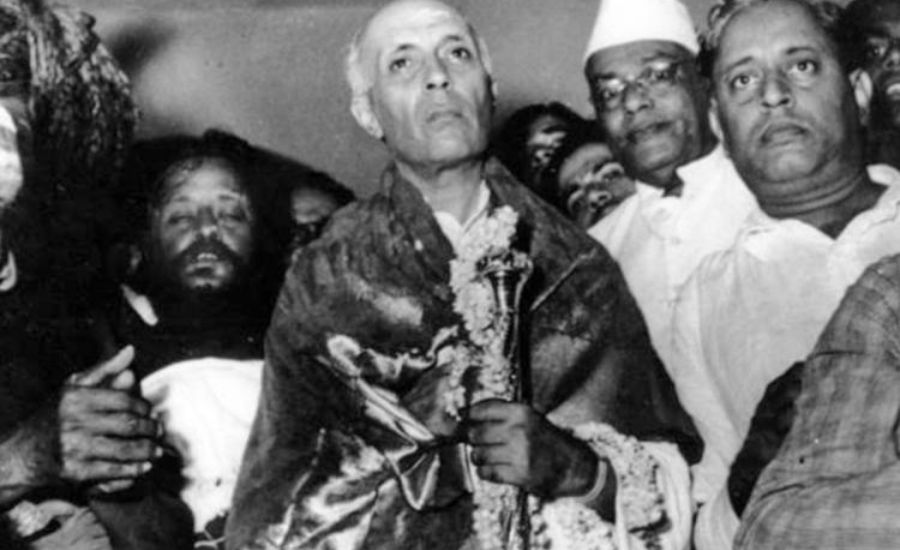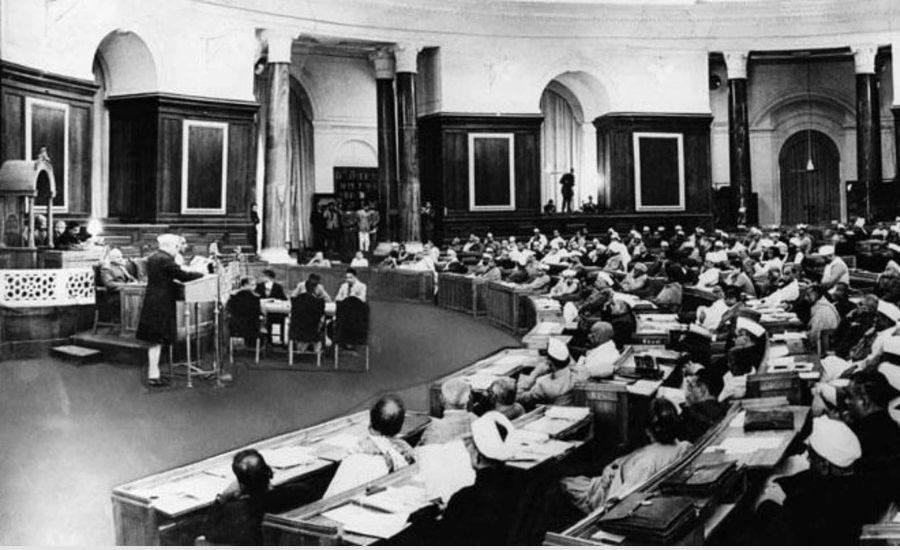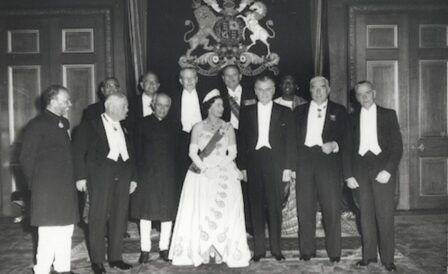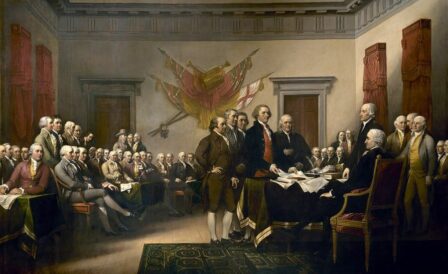
On 27 May, during a ceremonial event in Delhi, the Prime Minister received a Sengol—a sceptre symbolising kingly power from the Chola era—from a seer belonging to an adheenam in Tamil Nadu. The atmosphere resonated with Vedic chants performed by other priests from various adheenams. The following day, the Sengol took its place at the center of a sacred space near the new parliament for a pooja, accompanied by additional rituals and Vedic chants filling the air. The Prime Minister actively participated in the rituals.
Then, clutching the Sengol in his hands, the Prime Minister walked towards the newly constructed Parliament accompanied, not by his usual Special Protection Group bodyguards, but by the adheenam seers. As they reached the seating area of the Lok Sabha, the Prime Minister reverently installed the Sengol next to the Speaker’s chair.
The bold Hindu imagery and the atmosphere reminiscent of a coronation during the entire event drew significant criticism. Nevertheless, the government asserted that it was simply a re-enactment of a ceremony that occurred on 14 August 1947, when Jawaharlal Nehru was presented with a Sengol as India celebrated its independence. However, historians, while acknowledging the occurrence of such a ceremony, have raised serious doubts regarding its specific details and significance.
But why would the government exaggerate the 1947 ceremony, and more importantly, why choose to keep the Sengol as a centrepiece of the inauguration ceremony for the new parliament today?
In a 7-minute video produced by the Press Bureau of India, the transfer of the Sengol to India’s first Prime Minister is dramatised. At one juncture in the video, after the Sengol changes hands, the voiceover assuredly claims that “…thus the transfer of power to rule the nation happened with a symbol as per civilisational practice from a thousand years ago…”
It appears that an attempt is being made here to reinterpret the founding of an independent and republican India as a continuation of its ancient civilisation. But did India’s founders perceive India’s transformation in such a manner?
On the contrary, the architects of India’s constitution saw their endeavour as a departure from the past. In his momentous speech introducing the Objectives Resolution, Jawaharlal Nehru articulated this sentiment, saying, “…I feel also that in this long succession of thousands of years, I see the mighty figures that have come and gone… And now we stand on the verge of this passing age, trying, laboring, to usher in the new…”
India’s birth as a nation was a revolutionary and modern moment that broke away from its historical legacy, aiming to address and reconcile the complexities of its rich civilisational heritage through peaceful political means. The transformation lies in confronting issues around caste, gender, religion, wealth distribution, and political authority.
The Sengol handed over to Nehru symbolised monarchical rule and sought to legitimise it. Inscribed on the sceptre were the words: “It is our order that the follower of the lord, The king shall rule as in the heavens…” A mere nine months prior, while presenting the Objectives Resolution, Nehru declared, “I do not believe in the monarchical system anywhere, and in the world today, monarchy is a fast-disappearing institution.” He emphasised that India would unequivocally not adopt any form of monarchical rule. Instead, India would inevitably become a republic.

While there were symbols and acknowledgments of India’s past, evident in the use of civilisational imagery in the original manuscript of the Constitution and Nehru’s acceptance of the Sengol, India’s founding moment unequivocally rejected the ethos of civilisation for the purpose of designing India’s future. In fact, the anti-colonial movement and the constitution-making project were embarked upon precisely to rectify civilisational fractures and socio-economic hierarchies, in addition to the goal of getting the British to ‘Quit India’.
The framers of India’s Constitution recognized that the new Indian republic had to dismantle oppressive social, economic, and political structures that had been deeply ingrained in its civilizational heritage. They envisioned a new India that would surpass its historical limitations and establish a fresh identity based on inclusivity and social transformation.
While remnants of history and cultural heritage still hold significance today, the essence of India’s transformation into an independent republic lies in the commitment to chart a new course, discarding the vestiges of a bygone era and embracing the principles enshrined in the Constitution as a guiding force in our daily lives.
Comments
Leave a Reply
More blog posts

Monarchy and the Indian Republic
12 September 2022 • By Siddharth Jha
How did India decide to join the Commonwealth group of nations despite being a Republic?

Independence: A Tale of Two Declarations
14 August 2023 • By Editorial Team
What impact did the American Declaration of Independence have on the Declaration of Purna Swaraj introduced by the Indian National Congress in 1930?

The free news portal Newslaundry, juxtaposing the video of Sengol event in India with that of the recent coronation of Charles in England, argue that it had more to do with vanity of one political leader than any concern for culture or history. More importantly, for decades Maharashtra and up north every public office has been hosting religious imagery (courts even have temples) and indulging in religious practices during office hours. This runs counter to the state–religion seperation established by the Constitution. There is a need to raise voice against these practices.